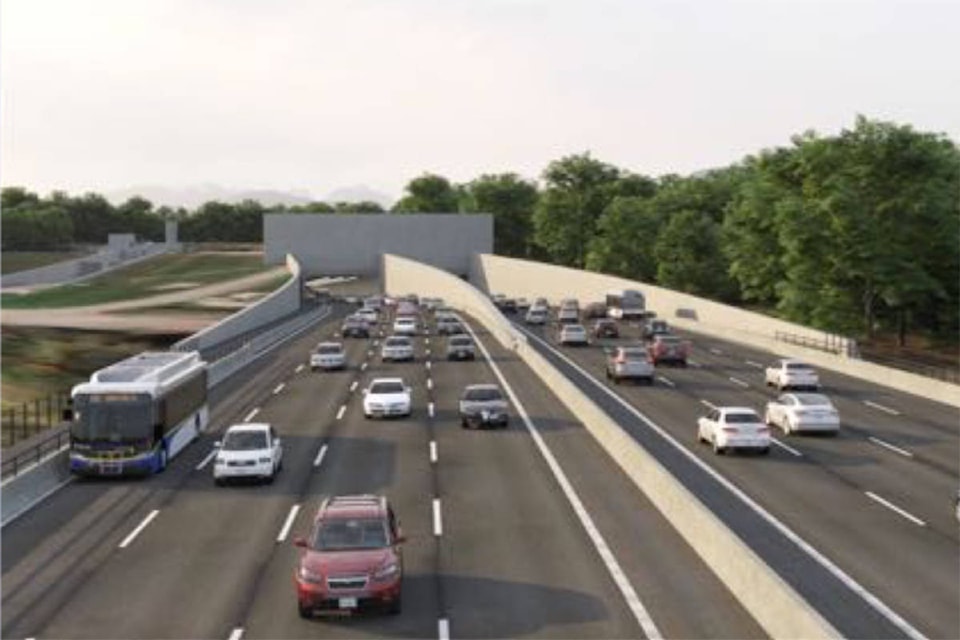A task force of Metro Vancouver mayors have recommended an immersive-tube tunnel as the best option for a new Massey crossing.
At a meeting at Metro Vancouver headquarters Wednesday afternoon, nine out of 10 members voted for an immersive tunnel with a focus on rapid transit.
Three general types of crossing were considered: a six- or eight-lane bridge, a deep-bore tunnel or a immersed-tube tunnel. A previous Liberal government proposal to build a $3.5 billion 10-lane bridge was struck down by the NDP government.
“There’s every disadvantage to the smaller bridge that there was with the 10-lane bridge,” Richmond Mayor Malcolm Brodie said.
.@malcolmbrodie says he's sure the public will tell mayors to "stop dithering and get it done." Replacement talks have been at this table since 2013, he notes. @BlackPressMedia
— Kat Slepian (@katslepian) October 2, 2019
Transportation ministry staff laid out the three options. Although the ministry’s Lina Halwani said “all three are technically possible,” a three-time higher cost effectively ruled out the deep-bore tunnel solution for the mayors.
Halwani said none of the options had official cost estimates attached.
“These designs are in their very early stages,” she said.
“It’s not fair to commit to a dollar figure when we still have a lot of work ahead.”
There were two options for the immersed-tube tunnel: a six-lane version that would use the existing tunnel as two dedicated transit lanes, and a eight-lane options that would add a multi-use pathway, have dedicated transit lanes and use the old tunnel for utilities.
Halwani cautioned against using the old tunnel for transit, noting TransLink was strongly against it. The tunnel is estimated to be “serviceable for 50 years,” according to a technical report, although it does not meet current seismic requirements.
“If we continue to use the existing tunnel we have to upgrade it, which will cost hundreds of millions,” she told the task force.
Metro Van staff say it's hard to guess at how much life the current tunnel has in it, but say it will be a "very old structure," around 70 years, when the new crossing is constructed. White Rock Mayor Darryl Walker questions whether it's even worth upgrading. @BlackPressMedia
— Kat Slepian (@katslepian) October 2, 2019
It would also “extend timeline for environmental assessment and add up to five minutes to transit times.”
White Rock Mayor Darryl Walker agreed.
“The tunnel’s done,” he said.
Walker questioned what would happen when traffic exited the new, wider crossing into Richmond. Transportion ministry staff estimate the 70 per cent of the traffic will “disperse along the way” before it reaches bridge into Vancouver.
“My sense is that’s not the case,” Walker said.
“What we’re doing here is looking at moving traffic issues… to the next roadblock, and we’re going to be talking about this in five years as well.”
.@BurnabySav reminds everyone that "the existing tunnel is not the solution," cuz it will be very expensive for a very short amount of use out of an upgraded tunnel. He asks task force members to pick an option "can live with," or they will be deciding for years. @BlackPressMedia
— Kat Slepian (@katslepian) October 2, 2019
The key to not recreating Massey congestion elsewhere is to “make sure there’s a decent rapid transit system throughout the whole [region].”
New Westminster Mayor Jonathan Cote agreed.
Rapid public transit along the whole Highway 99 route needed to be “enshrined” into the new Massey crossing proposal, and not “up for debate on the whim of whatever future provincial government may come into the discussion.”
The immersed-tube tunnel recommendation will now move to a committee before heading to the Metro Vancouver board. The board will then forward its recommendation onto the province.
READ MORE: Bridge or tunnel: Metro Vancouver to decide on Massey crossing recommendation
READ MORE: Council wants Massey crossing project to include South Surrey interchanges
READ MORE: Unity needed among mayors on Massey Tunnel replacement, Delta mayor says
